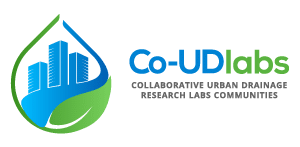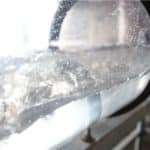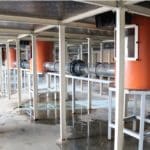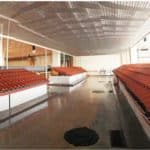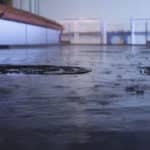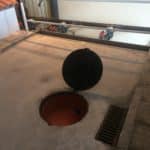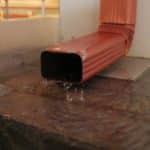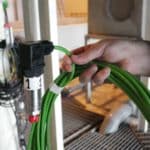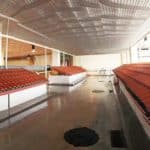
Location
University of Coruña
Campus de Elviña S/N - 15008 - A Coruña | Spain
Fields of expertise
Urban flooding
Runoff pollution
SuDS solution
Digital water solution
Modality of Access
In-person
Access offered for each project
60 days
Number of Projects
2 (1 per call)
Expected composition of the visiting user-group
1 researcher during the full access period and 5 researchers for 10 days

Description
The facility represents an urban intersection in a 100 m2 scale model (1:4) for studying rainfall-runoff transformation and pollutants mobilization.
This unique structure considers surface and drainage network flows and incorporates:
- a realistic rainfall simulator with intensities of 30, 50 and 80 mm/h;
- roof surfaces formed by curved ceramic tiles with adjustable slopes;
- 2 T-shaped streets, with concrete pavement with a transverse slope of 2% and a longitudinal slope of 1%;
- 4 gully-pots and a channel for the collection of runoff downstream;
- 4 manholes;
- 2 surface runoff generators located upstream of the intersection;
- a drainage system consisting of transparent plastic pipes with diameters of 200 mm;
- 2 flow contribution systems to simulate the upstream pipe flow conditions of the model; and (ix) a LSPIV optimized system to monitor 2D flow surface velocity maps. In addition, numerous flow meters, and depth, pressure, suspended solids and conductivity sensors are available, as well as complete sample analysis, for monitoring hydraulic and sediment transport processes.
Service provision
The facility is being used in the scope of a collaborative Spanish National project with Universities from Valencia (UPV) and Cantabria (UC) to assess green roofs performance.
Additionally, the offered facility is optimal for testing different street surfaces (including permeable solutions), roofs (including gravel and green roofs), grates and inlet conditions (considering surface-drainage network interactions), gully pot configurations (assessing sediment trapping efficiencies), and analysing the behaviour of different surface pollutants.
This includes the support by the experimented local research team in the preparation, development, and analysis of external research projects in its current configuration or performing modifications.
The results generated under the controlled but realistic conditions of the facility are also optimal for developing and validating new and existing urban drainage models, testing new sensors and SuDS techniques.

